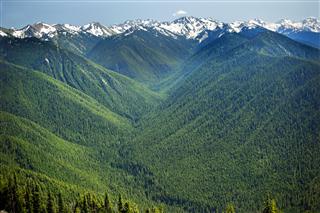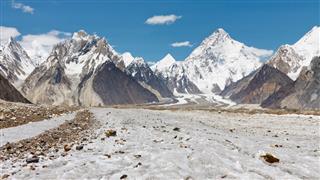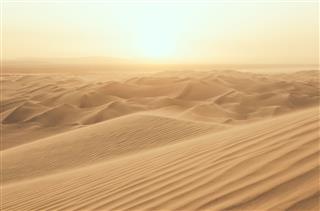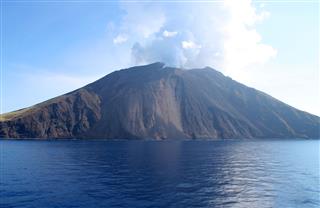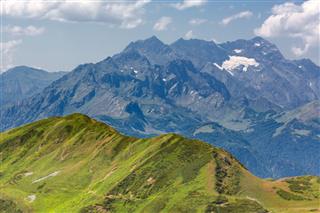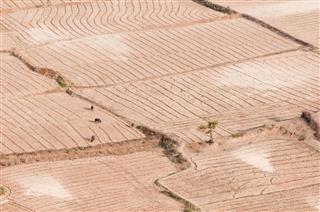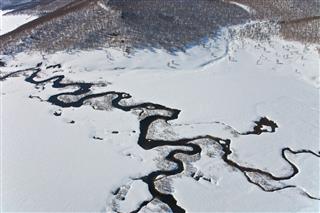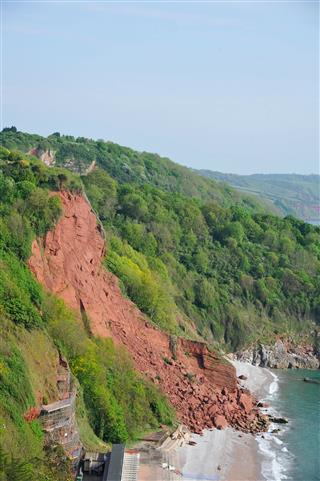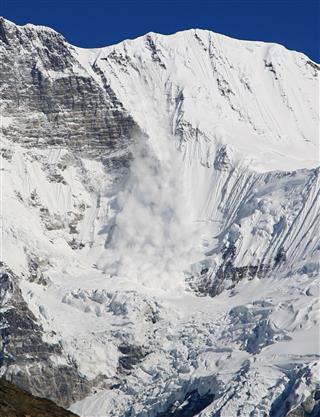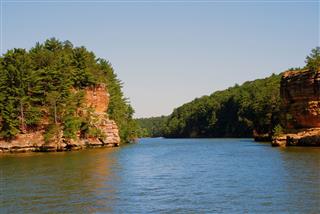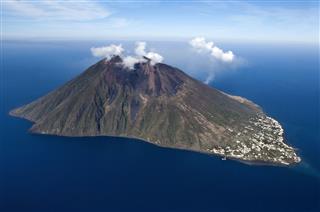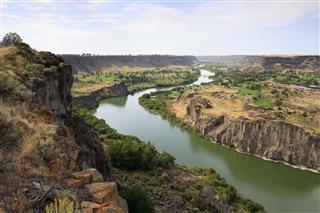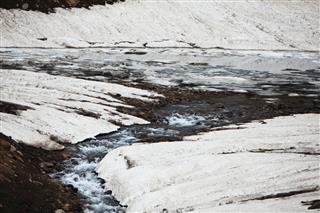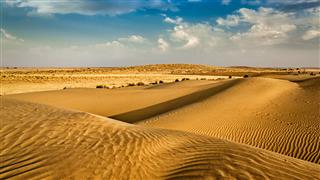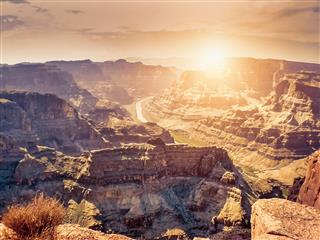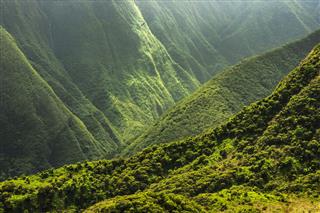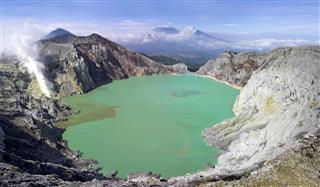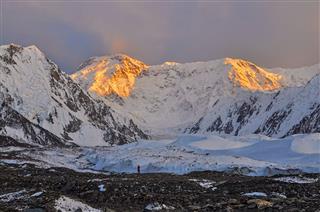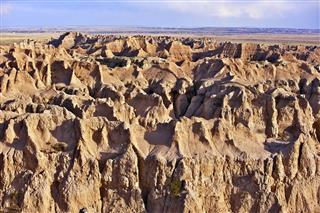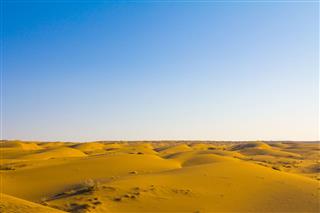
You don’t need an eye of a geologist to identify and admire the different types of landforms around you. Being well-versed with the basic features of various landforms and their formation process will be more than enough.
Landforms are defined as the natural physical features found on the surface of the earth. They are created by the actions of various forces of nature, mainly wind, water, and ice. In most of the cases, it is the erosional and depositional activity carried out by these forces of nature (agents of erosion and deposition) that leads to the formation of different landforms. At other times, it is the movement of the earth’s tectonic plates that contributes to their formation. Some landforms are created in a matter of few hours, while others take millions of years to appear.
Landform Types and their Features
There are many types of landforms on the earth’s surface. Each of these is characterized by its slope, elevation, soil and rock type, stratification, and orientation.
Aeolian Landforms
Aeolian landforms are formed by the chemical and mechanical action of the wind. The areas where wind is the dominant energy are prone to exhibit features such as dunes, loess, and mushroom rocks. Following are some of the many landforms associated with this type.
Dunes

Dunes the most common and intriguing features of desert environment and aeolian landforms (e.g. the Cerro Blanco in Sechura desert, Peru). They are mounds or small hills made up of sand, which are created due to the action of wind (or aeolian processes) and water flow (under water dunes). They may be dome-shaped, crescent-shaped, star-shaped, linear-shaped, parabolic (also called blowout dunes), transverse dunes and many more. Also, the height of a dune hill can be as low as 1 meter, or as high as 10 meter and more. Barchan is the most common type of dune found on earth. It is crescent in shape and is formed in the direction opposite that of the wind.
Loess

Basically, loess is a deposition of silt with a little amount of sand and clay. The word ‘loess‘ is German in origin, indicating sediments that are ‘loose’ in nature. It appears yellowish or brownish in color and its thickness varies from few centimeters to about 100 meters. The Missouri River of USA shows one of the thickest deposits of loess. In some places, wind action contributes to the formation of loess (e.g. Trade wind loess in Brazil and Venezuela), in some places, glacial activities contribute to the same (e.g. the periglacial loess situated on the sides of the Mississippi Alluvial Valley). Sometimes, loess also includes quartz along with other organic materials. Owing to its rich and fertile soils, loess forms an excellent agricultural piece of land.
Mushroom Rock

When a rock is subjected to intense erosion, that is non-uniform, and weathering in an arid environment, it undergoes deformation and takes the shape of what looks like a mushroom, hence the name ‘mushroom rock’. Also known as ‘pedestal rocks’, they are, at times, formed by earthquake or external factors that cause disturbances. A mushroom rock can also result from glacial action or an earthquake where an altogether different rock gets placed over a stationary one giving it a mushroom-like appearance. The Mushroom Rock State Park in Kansas, USA, is widely known for its mushroom rock formations.
Erosional Landforms
Landforms resulting from exclusively erosional and weathering activity are termed as ‘erosional landforms’. Given the wide aspect and source of their formation, these landforms can be, at times, categorized under other types too. The prominent features include mesa, butte and canyons.
Mesas

The word ‘Mesa‘ has Spanish origin meaning ‘table’. Mesas are also known as table mountains, owing to their distinctive appearances. These are elevated lands like mountains, characterized by presence of a flat top and steep rocks on the sides and can be mistaken for a plateau. Mesas are frequently noticed in areas that show arid to semi-arid climatic conditions. Occurrences of mesas are observed on Mars as well. Usually mesas are surrounded or covered by a resistant rock often known as a cap rock. This cap rock is often sedimentary in nature, but can also be igneous in some cases. A solid example of a mesa is the Grand Mesa in western Colorado. Erosion and weathering of the existing layered rocks leads to the formation of table mountains or mesas.
Buttes

People often get confused between a butte and a mesa. A ‘butte’ is almost similar to mesa and is a flat-topped hill with steep sides, but covers a less amount of area than the latter. If the over-lying rock is a non-resistant one, it gives in to the wind erosion and erodes away giving rise to the present structure. The word is originated from French word which means a hillock. Apart from Elephant Butte in New Mexico, the mountainous region of Utah and Arizona is famous for its striking buttes along with other landforms. Like mesas, buttes are also formed in arid to semi-arid desert conditions and because of scanty rainfall, vegetation seen over this landform is less. A butte also shows a covering of hard rock layer which is resistant to erosion.
Canyons
Canyons are similar to valleys, except that they are deep-seated, narrow and surrounded by steep sides. These landforms are created by erosion and also, by activities of rivers, winds, and glaciers. They are not a result of tectonic activities or natural disasters, but are formed slowly over a long period of geological time. The agent playing a dominant role in its formation is water with some amount of wind erosion involved. You might have already heard about the Grand Canyon located in northern Arizona, which is carved out by the Colorado River. The Grand Canyon and the Bronson Canyon are classic examples of this type.
Mountainous and Glacial Landforms
Glaciers are commonly mistaken as one of the landforms, fact is, like rivers, glaciers give rise to landforms such as cirque, esker, fjord, arête, and so on. The main landforms associated with mountains are valleys and hills.
Valleys

Valleys are low-lying areas of land, situated between the hills or mountains (e.g. the California Central Valley). In most instances, they are formed by the actions of rivers and glaciers. Depending upon the shape, valley forms are classified as U-shaped, V-shaped valley and a flat-base valley. V-shaped valleys are formed by flowing water or rivers, whereas generally, the U-shaped valleys are formed by glaciers. Tunnel valleys are also formed due to glacial activity. Many times, during the formation of a U-shaped valley, the floor of the valley remains at a higher elevation than normal. This valley is then termed as a ‘hanging valley’.
Hills

Hills are raised portions of lands, characterized by presence of slopes (e.g. the Black Hills). They are formed due to activities of glaciers and water currents having an elevation of about 1500 ft. Different terminologies are often used to describe a hill such as mound or a butte and the like. Mounds are 10 m in height, and in simple terms are hills which are made by people. But a hill is usually formed as a result of geological activities such as faulting. From the definition itself, it is understandable that hills and mountains are similar types of landforms. Nonetheless, remember that a hill is smaller in height than a mountain. Also, it has sloping sides, unlike the steepness of mountains. However, a mountain when subjected to extensive erosion can result in formation of a hill.
Glacial Landforms

Glaciers are huge, slow-moving bodies of ice, formed due to the compaction of snow layers. Mainly there are two types of glaciers – alpine glaciers, which are formed in high mountains and continental glaciers, which are formed in cold polar regions. Move with respect to gravity and pressure, the actions of glaciers (soil erosion, transportation, deposition) lead to creation of glacial landforms. A cirque is a circular depression formed due to alpine glaciation. An arête is a large rock present or formed between cirques. Esker is sediment deposition by a stream in a longitudinal manner, whereas a fjord is a glacial trough within sea or ocean water.
Fluvial and Coastal Landforms
River and coastal water action leads to the formation of these landforms. Deltas and peninsulas are formed due to the depositional action of water, whereas meanders and cliffs form as a result of the erosional processes.
Deltas

Deltas are typically formed at the mouth of a river when it meets the ocean or the sea. The different types of deltas include those which are dominated by tides, waves, and estuaries. They are also low-lying, triangle-shaped areas, located at the mouth of rivers. A clear example of this landform type is the Mississippi River Delta. In the course of creating a delta, the sand, silt, and rock particles are accumulated in a nearly triangular shape. The name ‘delta‘ is coined with reference to similarity of this landform shape with that of the 4th letter of Greek alphabet. Often confused with alluvial fans, deltas are shallower than alluvial fans and always enter a water body. The largest delta in the world, the Ganges Delta or the Ganges-Brahmaputra Delta is fed by some of the major rivers in the Indian subcontinent, including the Ganges and Brahmaputra.
Peninsulas

The word ‘Peninsula‘ is Latin in origin, and means ‘almost island’ (pene meaning almost, and insulameaning an island). Peninsulas are large land areas that extend into water bodies, and are surrounded by water on three sides (e.g. the Baja California peninsula). It is nearly similar to an island, hence the name. Peninsulas are formed by lithospheric movements and action of water currents. They are not to be confused with a bay or a cape. Bay is a water body surrounded by land on three sides, and a cape, though somewhat similar, is not as prominent as a peninsula.
Meanders

When a flowing river erodes its outer banks at places where it bends or takes a turn, it forms ameandering river or a river with steep bend. As the bend or the curve of the river increases, over the period it gets detached from the main river forming a shape of an oxbow, and thus called oxbow lake. Every meander has a concave bank and a convex bank also known as inner and outer bank or edge respectively. Sediment deposition takes place on the inner edge whereas erosional activity occurs on the outer edge. Colorado Plateau exhibits various examples of different types of meanders.
Sea Cliffs

Cliffs are almost vertical rock outcrops at a great height above the sea-level and formed due to the erosional action of the water. Rocks like sandstone and limestone which are resistant to weathering usually form sea cliffs. Hawaii hosts some of the highest sea cliffs in the world, Kalaupapa (1,010 m) being one of them. The vertical nature of a sea-cliff hosts a large number of waterfalls around the world. The angle of the cliffs varies with the rock and type of geological conditions present at that particular place.
Volcanic Landforms
The term volcano is used colloquially for both the vent and cone-shaped mountain, which are formed at the time of volcanic eruption. A volcanic mountain can be identified from its opening at the top. Depending upon the features, volcanic landforms are of different types. Examples of the same include volcanic islands, crater lakes, volcanic domes, lava plains, etc.
Volcanic Islands

Volcanic islands are terrestrial areas, surrounded by water on all sides, e.g. the Hawaiian Islands. These raised areas are formed either as a result of volcanic eruption or due the presence of hot spots. Accordingly, the actual location of islands differ from one another. Volcanic islands are also formed at the location of the subduction zone, where one plate is subducting under another plate. Thus, we have islands surrounded by a lake, river, sea, and ocean. Mariana Islands in the Pacific Ocean are examples of such type. Iceland is one of the largest volcanic island in the world. Here, the divergent plate boundary which lies between two continents has surfaced on the Earth.
Crater Lake

A lake forming in a volcanic crater is called ‘crater lake’. When showing the presence of volcanic fumes, the lakes are known as ‘volcanic lakes’. At times, when a volcano erupts, it blows to such an extent that its vent gets exploded and a considerable amount of the volcanic mountain is destroyed. This destruction creates a bowl-shaped depression which is known as ‘caldera’, and when this depression gets filled with meteoric water over the number of years, it is called a crater lake. Crater lake is often mistaken for impact craters or ring dykes. The Crater Lake of Oregon is one of the most famous lakes formed due to volcanism. It has a spiritual importance in the lives of people from several Native American tribes.
Plains and plateaus are the landforms which are formed as a result of many processes combined, and are not pertaining to a particular erosional and weathering action. They can be roughly classified under slope landforms.
Plains

Plains are flat and broad land areas on the earth’s surface (e.g. prairies, steppes, great plains of the Central United States). The elevation of these landforms are relatively low, when measured with reference to the mean sea level. Plains are formed due to sedimentation of the eroded soil from the hills and mountains, or due to the flowing lava deposited by the agents of wind, water, and ice. Due to their flat lowland nature and fertile soil, they are often preferred for agricultural activities. Depending on the location and climate the vegetation found on different plains continues to vary. They are not just found on land, but are also found on the ocean floor where they are called ‘abyssal plains’. These plains form at a depth from 3500 to 6000 meters.
Plateaus

Plateaus or tablelands are large, highland flat areas, which are separated from the surrounding areas by a steep slope. The Tibetan Plateau, also referred to as ‘the Roof of the World’, is at an elevation of 16,000 feet. Plateaus are formed due to various actions such as collision of the earth’s tectonic plates and uplift of the earth’s crust by the action of magma. Also, some of the tablelands are resulted due to lava flow from the volcanic eruption. Plateaus cover almost half of earth’s surface and except for those which are formed at a high elevation, most of the plateau regions are inhabitable. Plateaus resulting form volcanic activities are extremely fertile, and are hence ideal for agriculture.
The sub-types of every landform are numerous, and have various aspects associated with it. The landforms aforementioned are relatively common and easy to understand. People who are interested in studying these landforms in detail, depending on their rock type and the geochemistry, could refer to the concerned expert in the particular subject.

